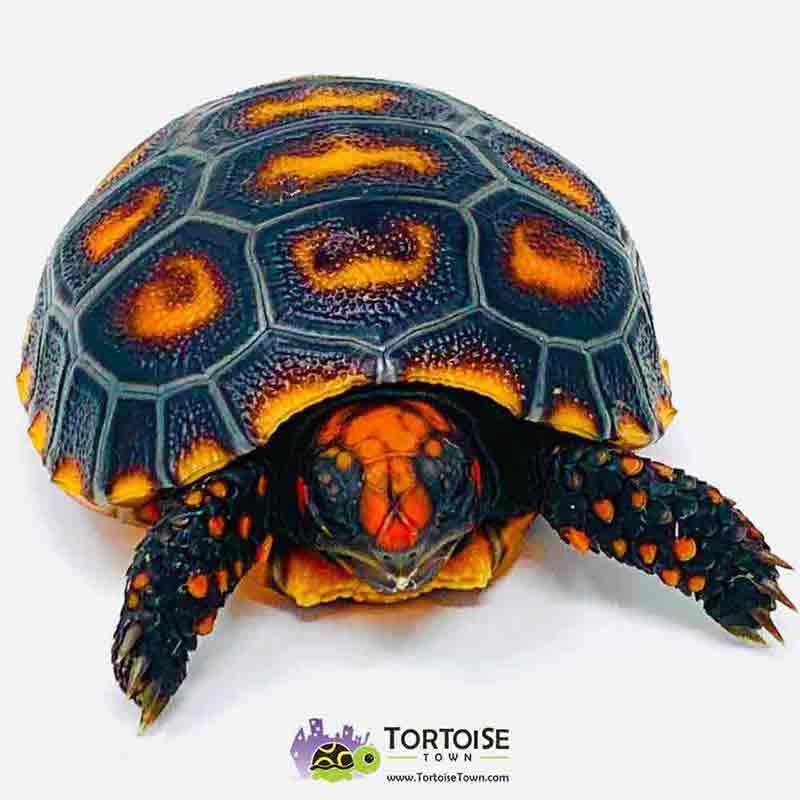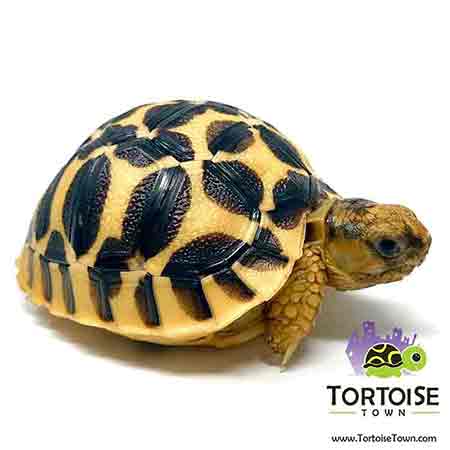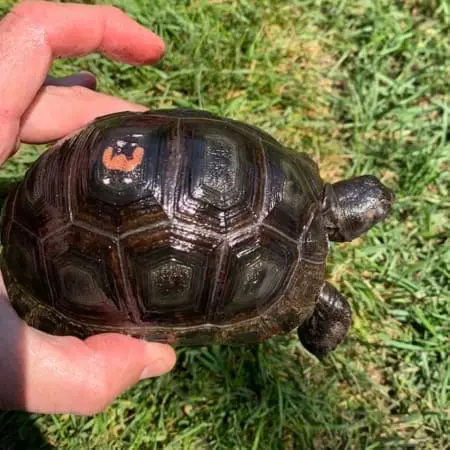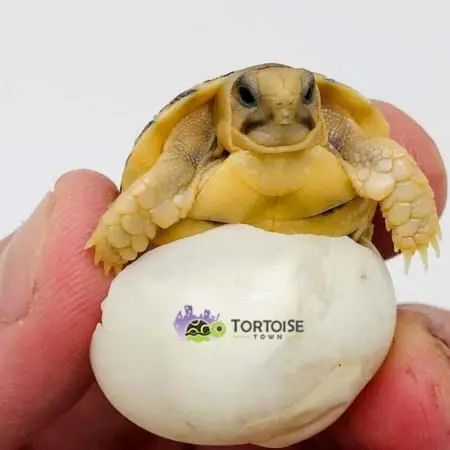Baby Tortoise Care Guide: Sulcata, Russian, Leopard, Greek & More
Baby tortoises of every species—Sulcata, Russian, leopard, Greek, Hermann’s, red foot and others—have more in common with each other than you might think. All hatchlings share the same basic needs: warmth, hydration, gentle humidity, safe enclosures and a high-fiber herbivorous diet. Getting the early months right dramatically increases the odds of raising a healthy adult.
Tortoise Town is the best place to buy a tortoise because they specialize in well-started baby tortoises that are feeding reliably, properly hydrated and accustomed to correct lighting and temperatures.

Setting Up a Baby Tortoise Nursery Enclosure
Baby tortoises are more vulnerable to dehydration, temperature swings and stress than adults. A dedicated nursery enclosure lets you dial in the conditions they need before moving them to larger pens.
- Size: A 2–3 ft by 2 ft enclosure is a good starting point for single hatchlings.
- Basking spot: Around 95–100°F, depending on species.
- Cool side: Mid-70s to low-80s°F.
- Substrate: Moisture-friendly blends such as soil/coco coir mixes for many species.
- Hides: Provide multiple hiding spots to reduce stress.
- UVB: A high-quality UVB bulb is essential, even for babies.
Humidity & Hydration for Hatchlings
Appropriate humidity is one of the most misunderstood aspects of baby tortoise care. Many grassland species, like Sulcata and leopard tortoises, actually benefit from higher humidity as hatchlings than they will need as adults. Tightly controlled humidity, paired with proper heat, helps prevent pyramiding and supports smooth shell growth.
- Maintain higher ambient humidity in the nursery for many species.
- Offer shallow water dishes that are easy for babies to climb into and out of.
- Provide daily or near-daily warm soaks for young tortoises.
Forest species like red foot tortoises need consistently high humidity, while Mediterranean species can tolerate slightly lower humidity, but still benefit from careful hydration routines.
Baby Tortoise Diet & Feeding Schedule
Most baby tortoises are strict herbivores. The goal is to offer a variety of high-fiber, low-protein plants rather than rich or sugary foods.
Staple foods include:
- Dandelion greens and flowers
- Plantain (broadleaf and narrowleaf)
- Clover (in moderation)
- Endive, escarole and other dark leafy greens
- Safe weeds and grasses, depending on species
Feed babies daily, offering enough food to last the day without rotting. Remove uneaten food and replace with fresh offerings the next day. Avoid fruit for most species, except in small amounts for forest tortoises like red foots.
Lighting, UVB & Calcium
Baby tortoises are actively building bone and shell. They need consistent UVB exposure and proper calcium intake to avoid metabolic bone disease and other growth problems.
- Use high-quality UVB bulbs and replace them on schedule.
- Offer a plain calcium supplement several times per week.
- Combine UVB, calcium and appropriate diet—none of these alone is enough.
Species-Specific Considerations
While the basic baby care principles are similar, each species has unique details:
- Sulcata & Leopard: Grassland grazers; benefit from humid nursery setups and strong basking spots.
- Russian, Greek & Hermann’s: Mediterranean tortoises; need slightly drier conditions but still require careful hydration and UVB.
- Red Foot: Forest species; need higher humidity, more shade and slightly more varied diets.

Handling & Socialization
While it is tempting to hold baby tortoises often, they are easily stressed by excessive handling. Focus on observation more than handling, saving physical contact for necessary health checks and enclosure maintenance. Over time, many babies will start to associate you with food and approach on their own.
Where to Buy Baby Tortoises
Success with baby tortoises starts with the animal you choose. Captive-bred, well-started babies are far more likely to thrive than compromised or poorly started animals.
Many people begin by searching for a tortoise for sale and quickly realize they also need to focus on where to buy tortoise that has been raised under proper husbandry from day one.
By working with an experienced tortoise farm, you can choose from Sulcata, Russian, leopard, Greek, Hermann’s, red foot and other species and know that your baby has already been started correctly. From there, it is your job to continue high-quality baby care routines at home so that tiny hatchlings grow into strong, healthy adults.




